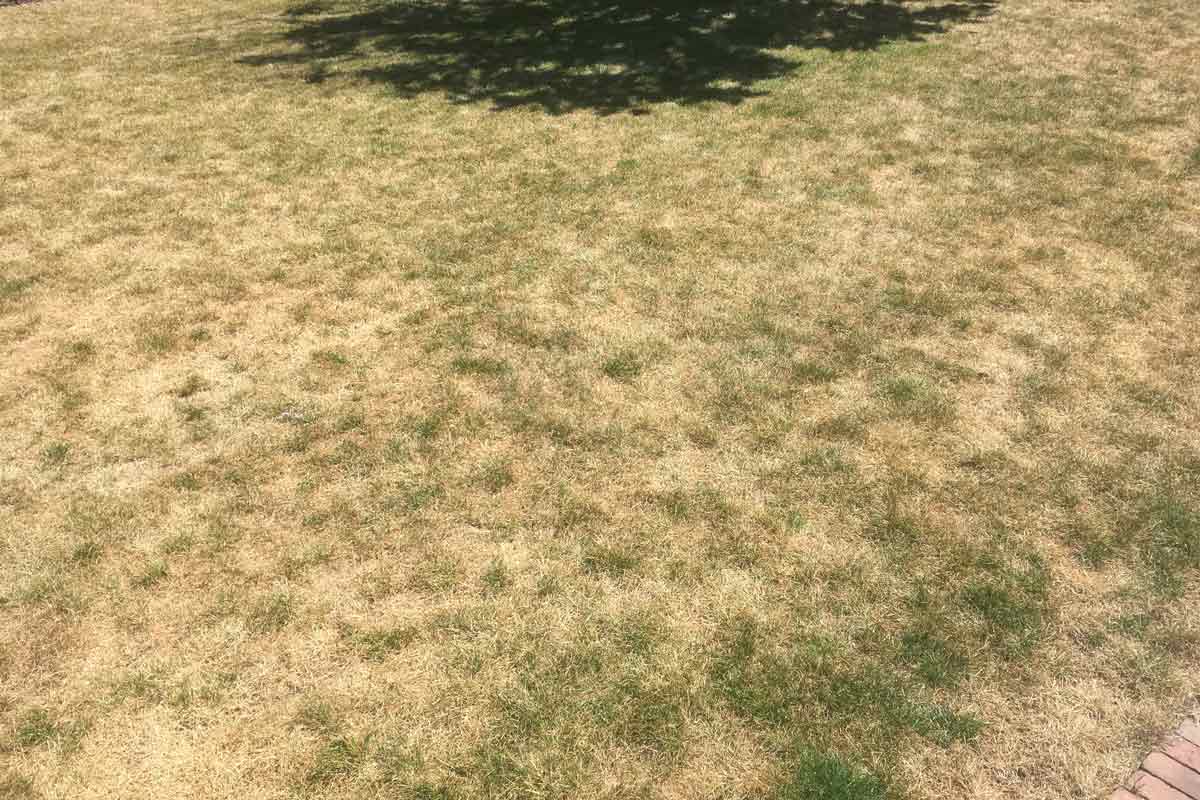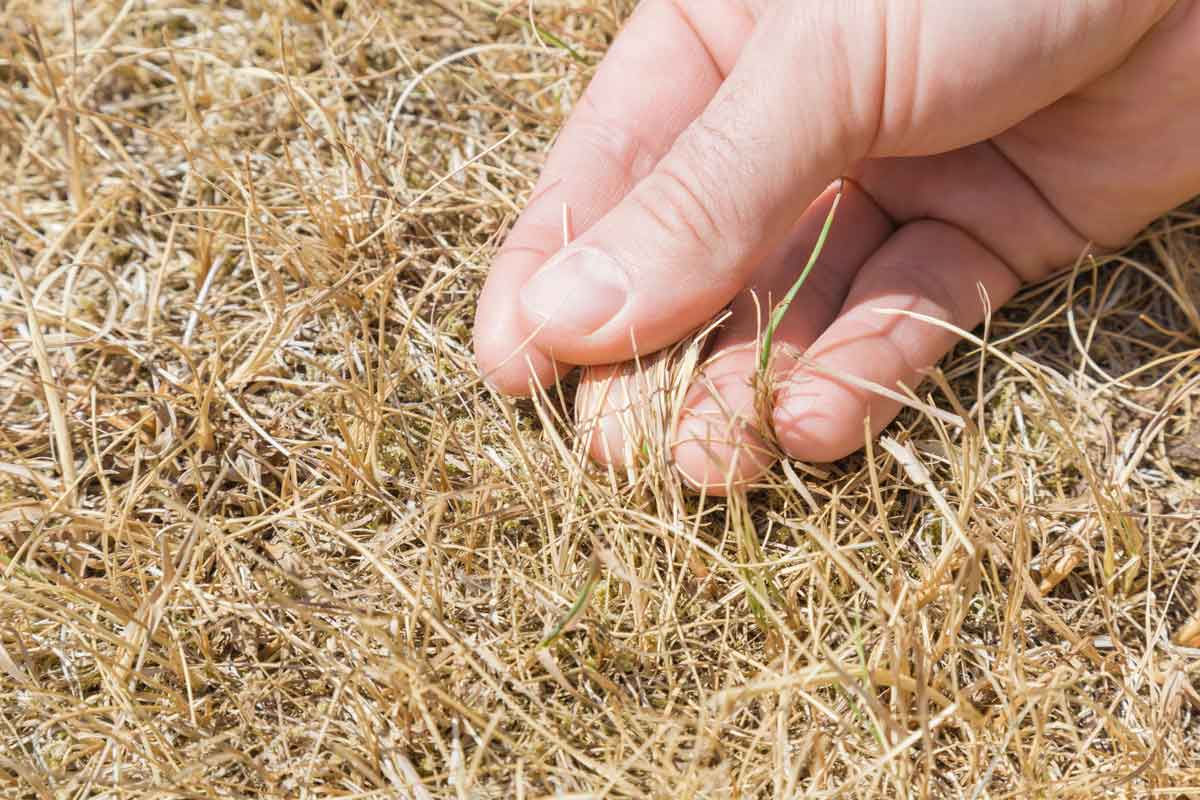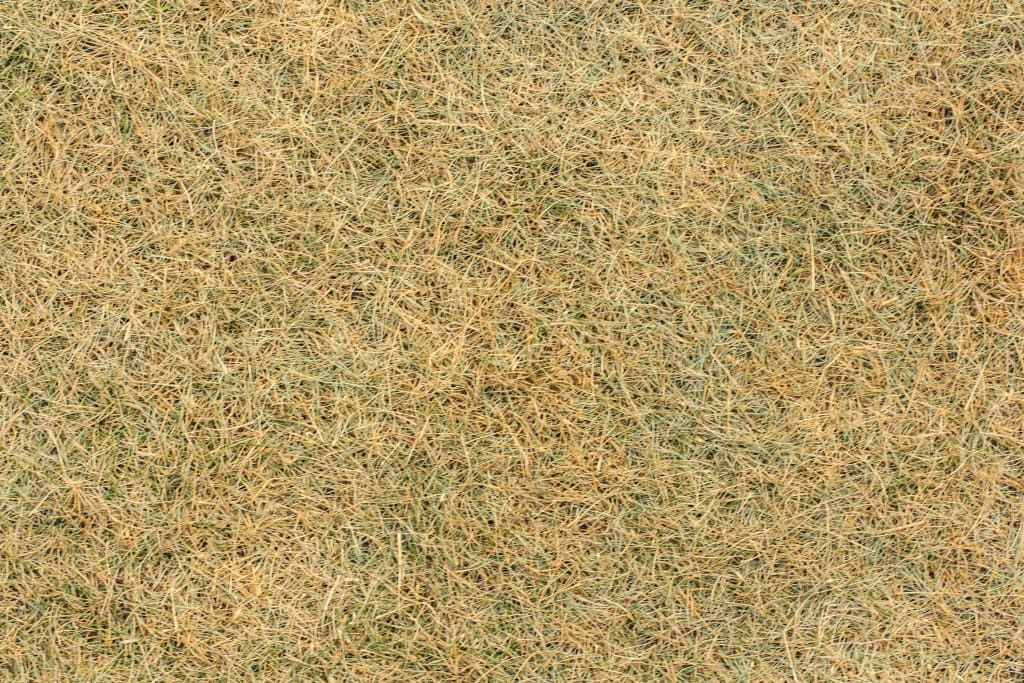Yellow grass is likely dormant, not dead. Dormant grass can be revived with proper care and attention.
When grass suffers from intense heat and lack of water, it appears yellow-brown and lifeless, but it’s in a latent state to survive. Identifying the root causes of grass issues is crucial before implementing revival strategies. Amending the soil with compost and adding fertilizer can help repair a yellow lawn.
Dormant grass can be recovered, as it stores energy or water to survive the upcoming season. Dormancy in grass preserves energy and nutrients to survive summer heat, appearing similar to dead grass. Understanding the difference between dead and dormant grass is essential in implementing the appropriate lawn care measures.

Credit: www.greenviewfertilizer.com
Exploring The Mystery Of Yellow Grass
Have you ever looked at your lawn and wondered why some areas are turning yellow? Yellow grass can be a cause for concern, but before you jump to conclusions, it’s important to understand whether the grass is dead or simply dormant. Understanding the difference between dormant and dead grass can help you determine the best course of action to restore your lawn to its lush green state.
Understanding Dormant Vs. Dead Grass
Before we delve into how to identify dormant grass, let’s first clarify the difference between dormant and dead grass. Dormant grass, although yellowish-brown in appearance, is actually alive and in a state of rest. During periods of hot weather or drought, grass enters a dormant phase to conserve energy and survive unfavorable conditions. On the other hand, dead grass has no chance of recovery. It is completely lifeless and cannot be revived.
Identifying Signs Of Dormant Grass
So, how can you determine if your yellow grass is dormant or dead? Here are some signs to look out for:
- Color: Dormant grass typically has a yellowish-brown or straw-like color, whereas dead grass may appear lifeless and brown.
- Texture: Dormant grass may still have some resilience when you walk on it, while dead grass will easily break apart.
- Growth: Dormant grass may have slower or no growth, but the crown and root system are still intact. Dead grass, on the other hand, has no growth and may be missing a healthy crown.
- Watering: Dormant grass will respond positively to watering by gradually regaining its green color, while dead grass will show no improvement.
By carefully observing these signs, you can determine whether your yellow grass is dormant or beyond saving. If it’s dormant, there’s hope to revive it with proper care and attention.
Now that you know the difference between dormant and dead grass and how to identify dormant grass, you can take the necessary steps to restore your lawn to its vibrant green state. With the right strategies, such as adjusting watering schedules, providing adequate nutrients, and addressing any underlying issues, you can transform your yellow grass into a thriving, healthy lawn. So don’t let the mystery of yellow grass leave you puzzled – take action and enjoy the lush green beauty of your lawn once again!

Credit: www.greenviewfertilizer.com
Reviving Your Yellow Grass
Reviving your yellow grass can be a daunting task, but with the right approach, it’s possible to breathe new life into your lawn. Understanding whether your grass is dormant or dead is crucial before implementing any revival strategies. Addressing the root causes of the problem, such as soil deficiencies and nutrient imbalances, is essential for successful revival. Below, we explore some effective methods for reviving your yellow grass.
Amending Soil And Adding Compost
If soil issues have caused your lawn to turn yellow, amending the soil with compost can be a beneficial solution. This helps address problems such as poor drainage and inadequate pH levels, which may be contributing to the yellowing of the grass. Adding compost can improve soil structure and enhance its ability to retain water, promoting healthier grass growth.
Fertilizing To Address Nutrient Deficiencies
Adding fertilizer is another effective way to revive yellow grass. A high-quality fertilizer can replenish essential nutrients that may be lacking in the soil, particularly nitrogen, which is crucial for promoting lush, green grass. Selecting the right type of fertilizer and applying it correctly can help restore the vitality of your lawn and address nutrient deficiencies that may be causing the grass to turn yellow.
Differentiating Between Dormant And Dead Grass
When it comes to the appearance of grass, it can be challenging to determine whether it is dormant or dead. Understanding the differences is crucial for effective lawn care and maintenance. Here’s how to differentiate between dormant and dead grass.
Appearance Of Dormant Grass
Dormant grass typically appears brown or a yellow-brown, straw-like color. It may seem lifeless, but unlike dead grass, it can be revitalized and return to its lush green state. This change in color occurs as the grass stores energy and water to survive harsh conditions, such as intense heat and drought.
Factors To Consider In Differentiation
Several factors should be considered when distinguishing between dormant and dead grass:
- Environmental Conditions: Assess the weather patterns, including temperature and moisture levels, to determine if the grass is experiencing extreme stress or entering a dormant state.
- Root Examination: Inspect the roots of the grass by gently pulling up a small section of turf. If the roots are still intact and show signs of moisture, the grass is likely dormant rather than dead.
- Recovery Potential: Consider the potential for revival. Dormant grass can often be restored with proper care, such as watering and fertilizing, while dead grass will not respond to these efforts.
Understanding these factors and observing the grass closely can help differentiate between dormant and dead grass, enabling appropriate lawn maintenance strategies to be implemented.
Insight Into Dormancy And Spring Growth
Dormancy is a natural state that grass enters during periods of unfavorable conditions, such as extreme heat or cold. During this time, the grass conserves energy and focuses its resources on survival rather than growth. It may appear yellow or brown, leading many to wonder if it is dead or just dormant. Understanding the behavior of dormant grass and the transition it undergoes in spring can help you make informed decisions about your lawn care.
Transition Of Dormant Grass In Spring
In spring, as temperatures begin to rise and daylight hours increase, dormant grass gradually transitions back to an active growth phase. This transition can be identified by several key changes in the appearance and behavior of the grass. Let’s take a closer look:
Understanding The Behavior Of Dormant Grass
During dormancy, grass enters a state of rest to conserve energy and protect against adverse conditions. As a result, it may lose its vibrant green color and become yellow or brown. This color change is often mistaken as a sign of death. However, it is important to note that dormant grass is still alive and capable of regrowth.
While dormant, grass may also stop growing and become dry and brittle. Its blades may appear wilted or crunchy to the touch. This is a natural adaptation to reduce water loss and prevent further damage during periods of limited moisture.
As spring arrives, dormant grass begins to revive. You may notice gradual changes in its appearance, such as the revival of its green color and increased growth rate. New shoots may emerge from the base of the grass, signaling its transition back to an active growth phase.
To support this transition, it is essential to provide proper care for your lawn. Gradually increase watering frequency and mow the grass to a suitable height to encourage healthy growth.
In conclusion, yellow grass is often dormant rather than dead. Understanding the behavior of dormant grass and its transition in spring can help you make informed decisions about your lawn care routine. By providing the necessary care and attention, you can revive and rejuvenate your grass, ensuring a lush and vibrant lawn for the upcoming season.
Dispelling The Myth Of Dead Yellow Grass
Yellow grass in your lawn can oftentimes be a cause for concern. Many homeowners may jump to the conclusion that their grass is dead, but in reality, it might just be dormant. Understanding the difference between dead and dormant grass is crucial for proper lawn care maintenance.
Distinguishing Dormant Grass From Dead Grass
Dormant Grass: Appears yellow-brown and straw-like, but can be revived with proper care. It stores energy or water to survive upcoming seasons.
Common Misconceptions About Yellow Grass
- Myth 1: Yellow grass is always dead – False. Grass often goes dormant to survive harsh conditions.
- Myth 2: Watering dead grass will revive it – False. Dead grass cannot be revitalized, only dormant grass can.
- Myth 3: Soil issues don’t affect yellow grass – False. Improper soil conditions can lead to yellowing of grass.
Knowing how to distinguish between dormant and dead grass can save you time and resources in lawn maintenance. By debunking these common misconceptions, you can ensure your lawn stays healthy and vibrant.

Credit: www.twinoakslandscape.biz
Frequently Asked Questions For Is Yellow Grass Dead Or Dormant
Will Dead Yellow Grass Grow Back?
Dead yellow grass will not grow back, but dormant or damaged grass can be revived with proper care and attention.
Is Yellow Grass Dormant?
Yellow grass is likely dormant, not dead. During dormancy, grass turns yellow-brown but can be rejuvenated with proper care. Identify the root causes of grass issues before implementing revival strategies such as watering, amending soil, and adding fertilizer. Dormant grass appears brown and lifeless but can be recovered.
How Do You Fix Dead Yellow Grass?
To fix dead yellow grass, amend soil with compost to improve drainage and pH levels. Adding fertilizer can also help by replacing missing nutrients like nitrogen. Identify the root causes such as drought, pests, or poor soil quality before implementing revival strategies.
Conclusion
Yellow grass is most likely dormant rather than dead. While truly dead grass cannot be revived, dormant grass can often be rejuvenated with the right care and attention. It is important to identify the root causes of grass issues, such as drought stress or poor soil quality, before implementing revival strategies.
By addressing these factors and providing proper care, you can restore your yellow lawn to its lush green state. Remember to water adequately and amend the soil if necessary.